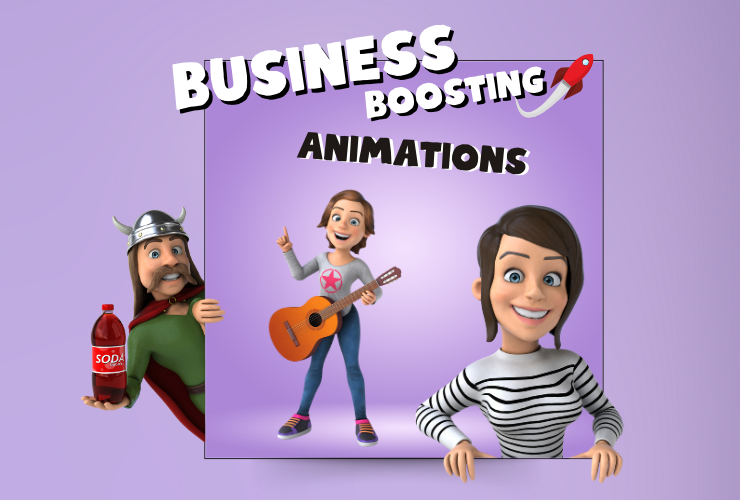How to Make Infographics Like a Professional for Different Audiences- Sow Dream
Do you want to make infographics that are clear, concise, and visually appealing?
If so, you've come to the right place! In this blog post, we'll teach you how to make infographics like a professional, even if you don't have any design experience.
We'll cover everything from choosing the right topic and audience to creating a visually stunning design. And we'll even give you some tips on how to promote your infographics so that they reach the right people.
So whether you're a student, a marketer, or just someone who wants to learn how to make infographics, this blog post is for you!
Understanding Your Audience
The first step in making infographics like a professional is to understand your audience. This includes identifying their target demographics and analyzing their preferences and interests.
Identifying Target Demographics
Your target demographics are the people who you are creating your infographic for. This could be based on their age, gender, location, occupation, interests, or any other factors that are relevant to your infographic.
For example, if you are creating an infographic about the benefits of exercise, your target demographic might be people who are interested in health and fitness.
Here are some specific questions you can ask to identify your target demographics:
- Who is my audience?
- What are their age, gender, and location?
- What are their interests and needs?
- What level of knowledge do they have about my topic?
- What is their pain point?
- What are they hoping to achieve by reading my infographic?
Once you have a good understanding of your target demographics, you can start to tailor your infographic to their needs.
Analyzing Audience Preferences and Interests
In addition to identifying your target demographics, you also need to analyze their preferences and interests. This will help you to create an infographic that they will find engaging and informative.
There are a number of ways to do this, such as:
- Conducting surveys or interviews
- Analyzing social media data
- Reading industry publications
- Talking to people in your target audience
When analyzing your audience's preferences and interests, pay attention to the following:
- What kind of content do they consume?
- What are their favorite colors, fonts, and images?
- What are their pain points?
- What are they hoping to achieve by reading my infographic?
By understanding your audience's preferences and interests, you can create an infographic that they will be more likely to read and share.
Crafting a Clear Message
Infographics are powerful tools for conveying information concisely and engagingly. However, their effectiveness depends on how well you craft a clear and compelling message. In this section, we will explore two critical aspects of creating impactful infographics:
Defining Your Infographics Purpose
Before you dive into designing your infographic, it's essential to have a crystal-clear understanding of its purpose. Ask yourself: What do you want to achieve with this infographic? Is it meant to educate, inform, persuade, or inspire? Defining a specific purpose will help you stay focused and ensure that your message resonates with your target audience.
Tips for Defining Purpose:
- Know Your Audience: Consider who your audience is and what they care about. Tailor your purpose to address their needs and interests.
- Set Clear Goals: Outline the specific goals you want to achieve with your infographic. Whether it's increasing brand awareness, explaining a complex process, or showcasing data trends, clarity in purpose is key.
- Call to Action: Determine if your infographic should lead to a particular action, such as signing up for a newsletter or visiting a website. Your purpose should align with this call to action.
Choosing the Right Data and Information
Once you've nailed down your infographic's purpose, the next step is selecting the most relevant data and information to support your message. Too much data can overwhelm, while too little can leave your audience wanting more. Striking the right balance is crucial.
Guidelines for Selecting Data and Information:
- Relevance: Every piece of data or information you include should directly contribute to your infographic's purpose. Eliminate any extraneous details that could distract from your main message.
- Accuracy: Ensure that all data is accurate and up-to-date. Citing your sources adds credibility to your infographic.
- Visual Appeal: Consider how the data will be presented visually. Charts, graphs, icons, and images should not only enhance understanding but also make your infographic visually appealing.
- Simplicity: Simplify complex data and concepts into easily digestible chunks. Use clear and concise language to explain your points.
- Hierarchy: Organize your information in a logical flow, with the most critical data prominently displayed. Consider the sequence in which your audience should absorb the information.
By defining a clear purpose and carefully curating your content, you'll set the foundation for an effective and engaging infographic that resonates with different audiences.
Designing for Different Audiences
Once you've defined the purpose and selected the right data for your infographic, the next crucial step is to design it in a way that resonates with various audiences. Effective design can significantly impact how well your message is received. In this section, we'll delve into the art of designing infographics for different audiences, focusing on customizing visuals, colors, and considering typography and layout.
Customizing Visuals and Colors
Visual appeal plays a pivotal role in capturing the attention of your target audience. Different audiences have varying preferences and expectations when it comes to visuals. Here are some key considerations to ensure your infographic's visuals are tailored to your audience:
- Audience Preferences: Research your audience's visual preferences. For example, a corporate audience might prefer clean, professional visuals, while a younger demographic may be drawn to more vibrant and playful designs.
- Brand Consistency: If creating infographics for a specific brand or organization, ensure that the visual elements align with the brand's identity. Consistency in colors, logos, and design elements helps reinforce brand recognition.
- Cultural Sensitivity: Be mindful of cultural differences that may influence color choices and imagery. Colors can hold different meanings in various cultures, so research is key.
- Visual Storytelling: Use visuals to tell a story. Icons, illustrations, and images should complement the narrative of your infographic, making it more engaging and relatable.
- Accessibility: Ensure that your visual elements are accessible to all audiences, including those with visual impairments. Provide alternative text for images and use color combinations that are easily distinguishable.
Typography and Layout Considerations
Typography and layout are often underestimated aspects of infographic design. However, they can significantly impact readability and the overall user experience. To effectively communicate your message to different audiences, pay attention to the following:
- Font Selection: Choose fonts that are legible and align with your audience's preferences. A formal audience might appreciate classic serif fonts, while a younger audience may prefer modern sans-serif fonts.
- Hierarchy of Information: Use typography to create a clear hierarchy of information. Headings and subheadings should guide the reader through the content, making it easy to follow.
- White Space: Embrace white space in your layout. Crowded infographics can overwhelm the reader. Adequate spacing between elements enhances readability and visual appeal.
- Responsive Design: Ensure that your infographic is responsive and adapts to different screen sizes. This is crucial for reaching audiences on various devices.
- Testing: Test your infographic's layout and typography with a small group from your target audience to gather feedback. Use this feedback to make improvements.
By customizing your infographic's visuals, colors, typography, and layout to suit the preferences and expectations of your diverse audiences, you'll increase its effectiveness in conveying your message and engaging a wider range of viewers.
Storytelling Through Infographics
Storytelling is a potent tool that can transform your infographic from a mere collection of facts into a compelling and memorable narrative. In this section, we will explore how to infuse storytelling techniques into your infographics, making them more engaging and relatable to diverse audiences.
Creating a Narrative Flow
Every successful infographic tells a story, and this narrative flow should guide your audience through the information you're presenting. Here's how to craft a compelling story within your infographic:
- Start with a Hook: Begin your infographic with an attention-grabbing headline, statistic, or question that piques curiosity and draws readers in.
- Structure Your Content: Organize your information logically, following a sequential order or a problem-solution format. This helps readers easily follow the narrative.
- Visual Hierarchy: Use visual cues such as size, color, and placement to emphasize key points and create a hierarchy of information. Ensure that your audience's attention is naturally drawn to the most critical elements.
- Relatable Examples: Incorporate real-life examples, case studies, or anecdotes that resonate with your audience. Personalizing the content makes it more relatable and memorable.
- Closure: Conclude your infographic with a strong and memorable takeaway. This could be a call to action, a thought-provoking question, or a summary of the key message.
Using Storytelling Techniques Effectively
Now, let's explore some storytelling techniques to enhance the impact of your infographic:
- Visual Metaphors: Metaphors can simplify complex concepts. Use visual metaphors or analogies to help your audience better understand your message.
- Characters and Personas: If appropriate, create characters or personas that represent your target audience. Tell their stories to humanize the data and connect with readers emotionally.
- Conflict and Resolution: Introduce a problem or challenge and then provide a solution or resolution. This format keeps readers engaged as they seek answers.
- Data-driven Narratives: If your infographic relies heavily on data, craft a narrative around the data points. Show trends, comparisons, and the story behind the numbers.
- Consistency: Maintain consistency in your storytelling style throughout the infographic. Consistency helps readers follow the narrative seamlessly.
- Visual Cues: Use arrows, flowcharts, or other visual cues to guide readers from one point to the next. Ensure a smooth and intuitive reading experience.
Accessibility and Inclusivity
Creating infographics that are accessible and inclusive is not only ethically responsible but also essential for ensuring your message reaches the widest possible audience. In this section, we'll explore the importance of accessibility and inclusivity in infographic design and provide actionable tips to cater to diverse audience needs.
Making Infographics Accessible to All
Accessibility ensures that people with disabilities can access and understand your infographics. To make your infographics more accessible, consider the following:
- Alt Text for Images: Include descriptive alt text for all images, charts, and graphs in your infographic. This allows screen readers to convey the content to visually impaired users.
- Color Contrast: Ensure there is sufficient contrast between text and background colors. This aids readability for individuals with visual impairments.
- Font Size and Readability: Use legible fonts and an appropriate font size. Avoid tiny text that may be difficult for some readers to discern.
- Keyboard Navigation: Test your infographic's usability using only a keyboard. Ensure that all interactive elements are accessible and navigable via keyboard commands.
- Descriptive Links: If your infographic contains links, use descriptive text for them. Avoid vague phrases like "click here."
Catering to Diverse Audience Needs
Inclusivity goes beyond accessibility and considers the diverse needs of your audience, including those with different language backgrounds, cultural perspectives, and cognitive abilities. Here's how to cater to diverse audience needs:
- Multilingual Versions: If your infographic has a global audience, consider offering versions in multiple languages. This shows respect for cultural diversity and broadens your reach.
- Cultural Sensitivity: Be aware of cultural nuances and avoid using symbols, colors, or imagery that may be offensive or misunderstood in certain cultures.
- Plain Language: Use clear and straightforward language that is easily understood by a broad audience. Avoid jargon or overly technical terms unless your audience is highly specialized.
- Test with Diverse Users: Get feedback from individuals who represent the diversity of your target audience. Their input can help you identify potential issues and make improvements.
- Customization Options: Where applicable, provide customization options for users. For example, allow them to adjust the language, color scheme, or font size to suit their preferences.
Testing and Feedback
Creating an effective infographic isn't a one-and-done process; it involves continuous refinement based on feedback from various audience segments. In this section, we'll explore the importance of testing and gathering feedback to ensure your infographics resonate with diverse audiences.
Gathering Feedback from Various Audience Segments
Receiving feedback from a diverse range of individuals helps you gain valuable insights into how different audiences perceive and engage with your infographics. Here's how to gather feedback effectively:
- Targeted Surveys: Create surveys tailored to different audience segments. Ask questions about the infographic's clarity, visual appeal, and relevance to their needs and interests.
- User Testing: Conduct user testing sessions with representatives from your target demographics. Observe how they interact with your infographic and note any pain points or areas of confusion.
- Social Media Engagement: Share your infographic on social media platforms and encourage discussions. Pay attention to comments, shares, and likes to gauge audience reactions.
- A/B Testing: If you have multiple versions of an infographic, run A/B tests to see which resonates better with specific audience groups. Analyze performance metrics like click-through rates.
- Focus Groups: Organize focus group sessions where participants can provide detailed feedback and engage in discussions about the infographic's content and design.
Iterative Improvements for Maximum Impact
Once you've gathered feedback, it's essential to use it constructively to improve your infographics. Here's a process for making iterative improvements:
- Analyze Feedback: Review all feedback collected from different sources. Identify common themes, pain points, and areas that require improvement.
- Prioritize Changes: Based on the feedback analysis, prioritize the changes or enhancements that will have the most significant impact on audience engagement and understanding.
- Test Again: Implement the identified improvements and test the revised infographic with a fresh set of diverse users. Ensure that the changes have resolved previous issues.
- Monitor Performance: Continuously monitor how your infographic performs. Track metrics like engagement, shares, and conversions to assess its impact on different audience segments.
- Update and Share: If necessary, update and refine your infographic based on ongoing feedback and changing audience needs. Share the improved versions to reach a wider and more engaged audience.
The Bottom Line
In conclusion, mastering the art of infographics is not just about presenting data; it's about crafting compelling narratives that resonate with diverse audiences. By following the strategies outlined in this guide, you can Make Infographics Like a Professional, ensuring your message reaches, engages, and leaves a lasting impact on everyone you aim to connect with.





